It has be tough for a manufacturer these days to bring back a model that was so respected for its capabilities back in the day. A quarter century or so has passed since Land Rover last sold the Defender in North America, which was launched right after World War II as Britain’s go-anywhere 4×4.
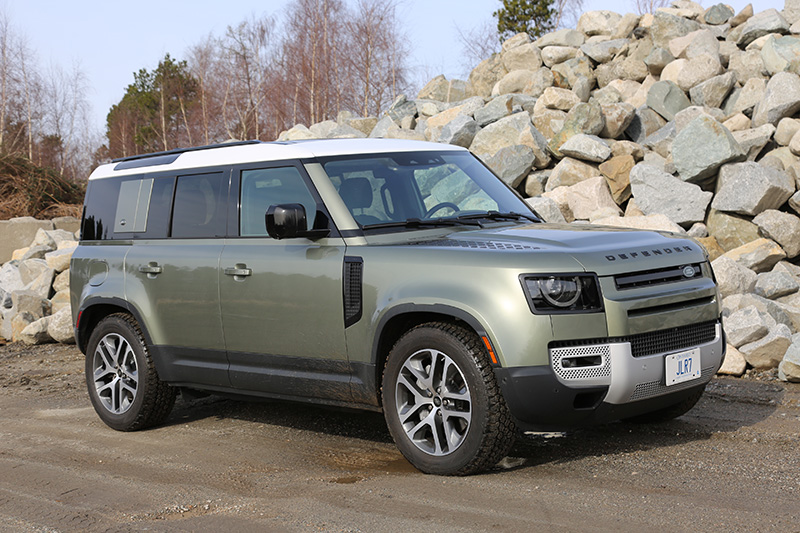
Why so tough? Because fans of the brand, and they are legion, would expect nothing less than the same sort of ruggedness and off-road prowess as the first 50 years of Defenders had. But much has changed in the auto business in the past couple of decades, and people want it all – luxury, comfort, style, performance….you get the picture.
So, the new Defender would have to be many things in one package, the basis of which is an all-aluminum monocoque chassis; the body-on-frame concept of the original just would not allow the kind of on-road performance that is expected these days. What does allow such a vehicle to be all things to all people is technology, and lots of it.
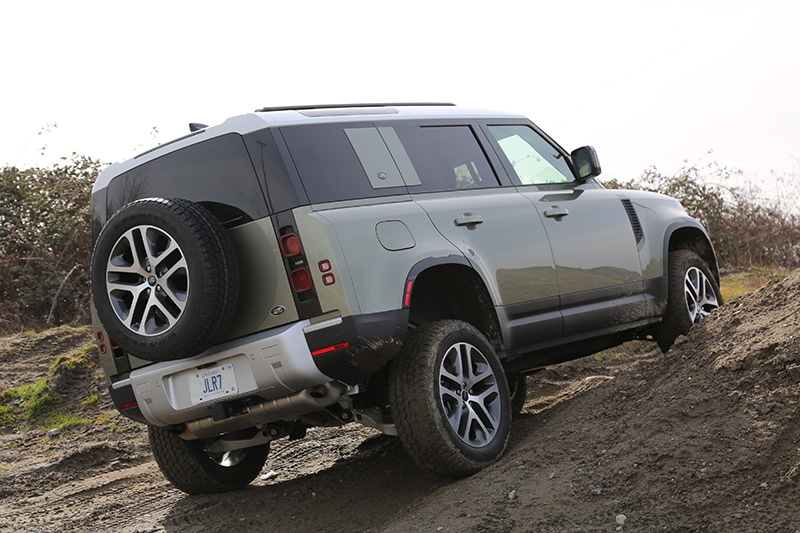
To be one of the best off-roaders in the world takes a very advanced all-wheel drive system that distributes torque to the axle that needs it the most, with the optional Electronic Active Differential that sends torque side-to-side at the rear, a feature that makes Defender that much more capable. A two-speed transfer case does its usual thing for torque multiplication, and Land Rover’s latest Terrain Response System lets the driver choose the driveline settings based on the terrain encountered.
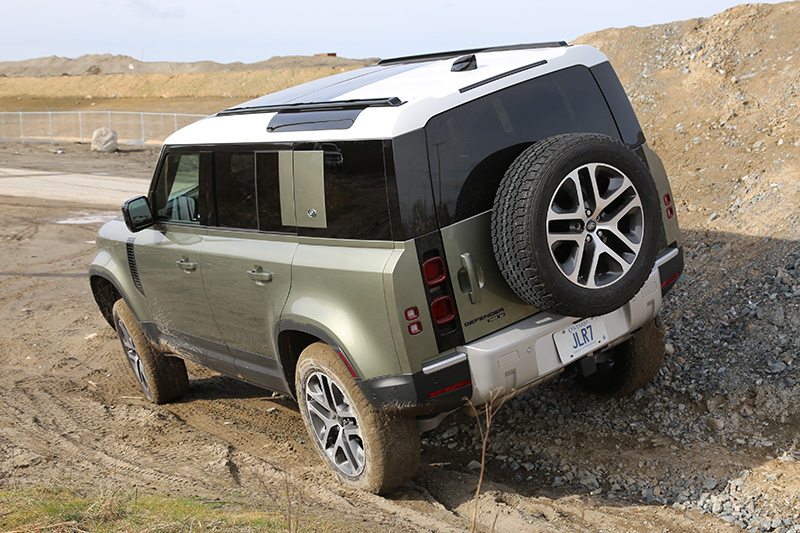
The off-road settings include Grass-Gravel-Snow, Mud Ruts, Sand, Rock Crawl, Wade, and Configurable. If there isn’t something there that covers where you are, then you are on the moon. In our brief off-road time with Defender in sand and dirt, we were able to find the settings, but not how to engage them, so they were not intuitive, at least not to this driver. Luckily, there is an Auto setting, which is said to figure it all out in the computer.
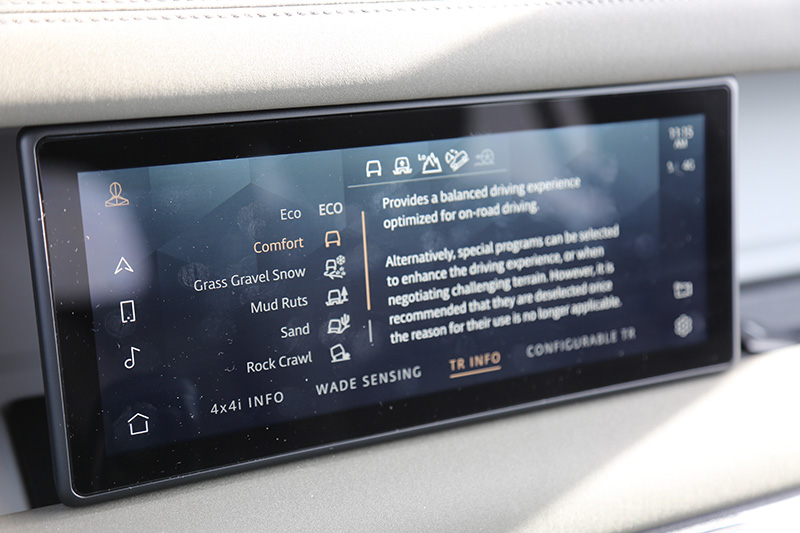
There is more. Raise the air suspension to the max, and you get almost 30 cm of ground clearance. Some of that ground might be submerged, so select Wade and go for it, confident that all the important electrical bits underneath have been sealed up for protection. The Defender will handle up to 90 cm (3 feet!) of water, but at that level, you’ll probably hope that you are not in a fast-moving river!
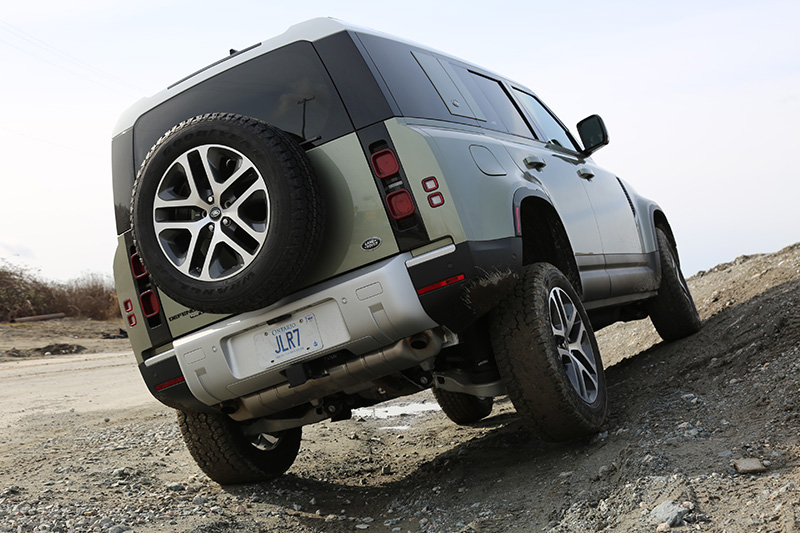
Eventually, most Defender drivers will need to hit paved roads to head home, and in that environment, it does well, too. The aforementioned air suspension combines with adaptive shock absorbers to deliver a smooth, even nimble ride for such a big vehicle. You can lower the suspension to below Normal level, to aid in entry and egress from the vehicle, and to smooth out the aero at speed.
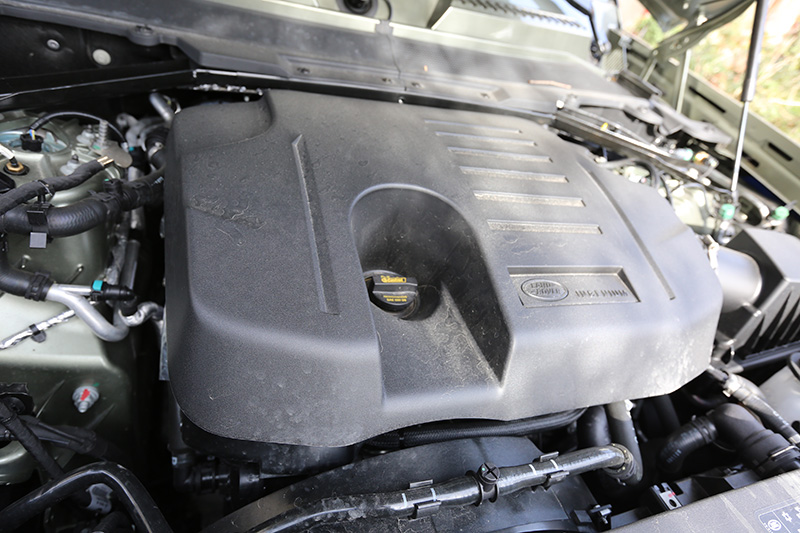
The standard engine in Defender is a 2.0-litre turbo-4, which reportedly delivers an adequate level of power (296 hp), but the engine to have is the 3.0-litre straight six (395 hp) that our tester had. Of interest is that it is both supercharged and turbocharged, and also has a 48-v motor-generator that harvests energy normally lost during deceleration and redeploys it to optimize performance. The supercharger is electric, not engine-driven like most of them, and takes care of low-RPM torque, until the turbo spools up and handles the higher engine speeds. It feels quick and responsive, and by the numbers, it is, with zero-to-100 km/h runs of 6.1 seconds, plenty quick for a 2,300-kg SUV, aided and abetted by the 8-speed transmission. Since we drove the Defender, Land Rover has added a V8 to the model line-up, for those who just must have one.
To get the six, one must have ordered at least the XS model, one up from the base model that only comes with the four. The model mix is somewhat bewildering in terms of what model gets what feature, but our X model tester was the top six-powered one, before you hit the V8. To get the air suspension, adaptive shocks and electronic differential, you need to get the X. Unfortunately, no model comes with the diesel, available elsewhere in the world.
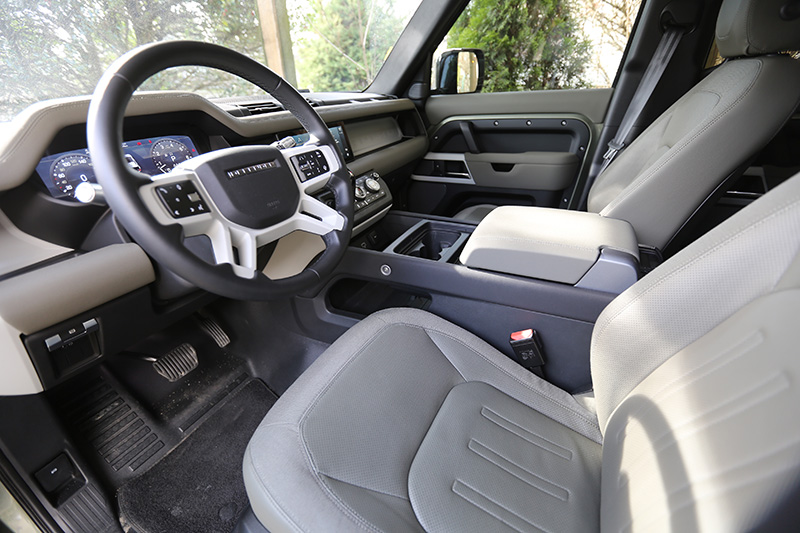
While the exterior is somewhat as you’d expect, a traditional boxy design in tune with the Defender’s heritage, it is the interior where Land Rover’s designers really went to town. The look is premium and a bit old-school utilitarian at the same time, with exposed bolts in the door panels, for example. Most of it, though, looks like somewhere you’d like to spend a lot of time, the seats being trimmed in Ebony Windsor leather and what LR calls Steelcut fabric, which means very durable and technical-looking. The 12.3-inch interactive driving display is one of the more clear and responsive on the market, although the menu system on it is one of the more unique and takes some learning to use.
Said seats have plenty of support in all the spots you would want, and there is lots of room in all directions. The same goes for the second row, but not so much for the optional third row, with which our tester was equipped (for $2,600.) There is very little room back there for adults, and even less room behind it for cargo. Said cargo space is, of course, accessible by a tailgate, with hinges on the right side. Which means, it opens from the left, not so great for access when you are parked on the right side of a street.
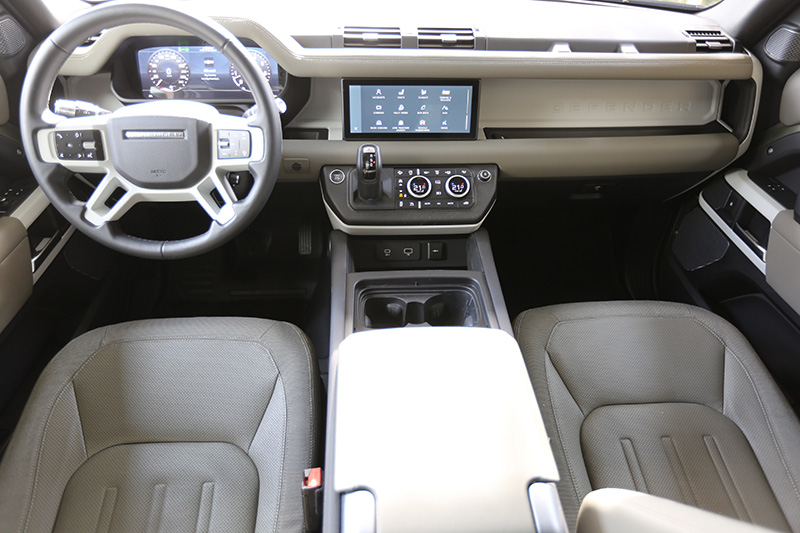
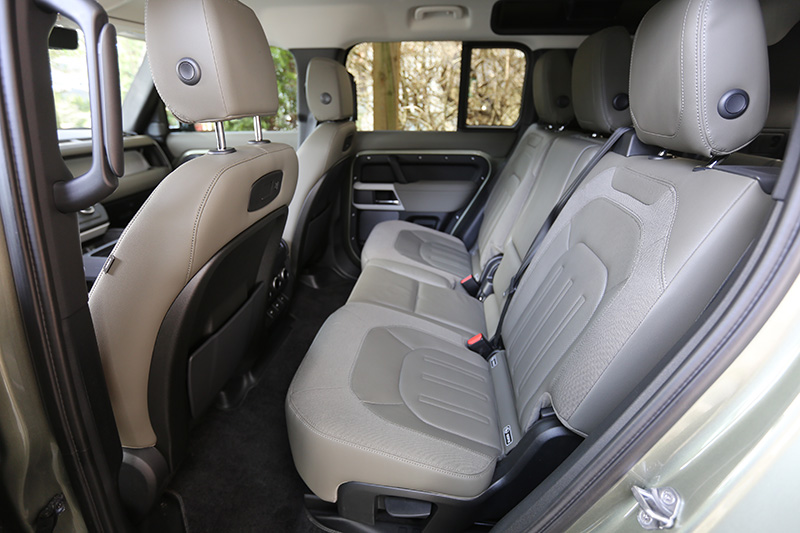
There are a couple of options for the front seat area; you can remove the entire console and install a jump seat (for $950) that makes it three-across seating, or get a refrigerated centre console (for $800). Indeed, there are hundreds of options for personalization of the Defender; you can even buy jumper cables for $295.
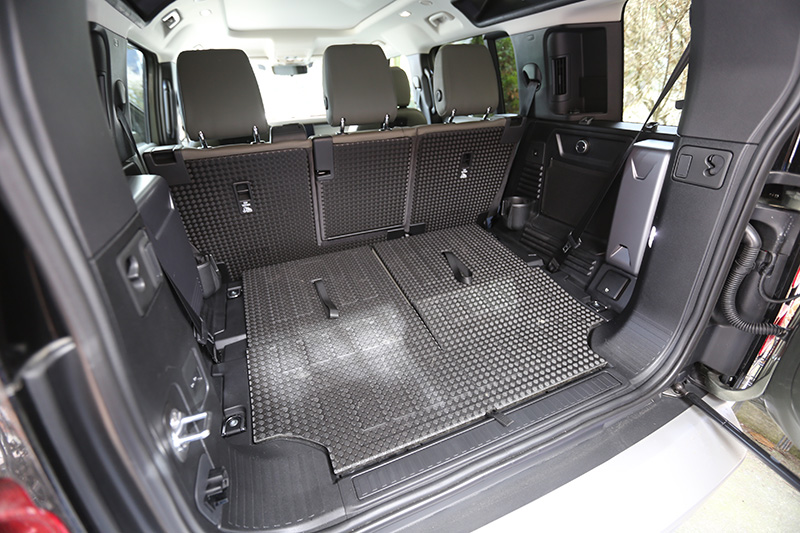
The Defender X we drove starts at $99,900 and of course goes up quickly from there if you start checking lots of options boxes. But you can get into a nicely equipped base four cylinder model for $65,500, a level to which some non-luxury off-road brands have risen.
Is this a worthy successor to the original-style Defender? We would say that Land Rover has done a great job of maintaining its style and off-road prowess, while incorporating all the modern technology and on-road comfort that people expect these days.




